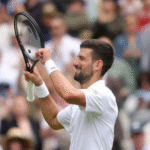Wimbledon, a tournament steeped in tradition, has made a significant shift in its officiating this year by fully embracing electronic line-calling (ELC) and retiring its human line judges. This move aligns it with other Grand Slams like the Australian and US Opens, though the French Open still retains human judges.
Seeking Maximum Accuracy and Consistency
The primary driver behind the transition to ELC is the pursuit of greater accuracy and consistency in line calls. The All England Club (AELTC) stated that the time was right to take this “important step in seeking maximum accuracy in our officiating.” Electronic systems like Hawk-Eye utilize multiple cameras and advanced computer vision to track the ball’s trajectory and determine its landing spot with a precision that human eyes cannot consistently match. This aims to reduce contentious calls and ensure fairness across all matches.
Alignment with Other Tours and Grand Slams
The move brings Wimbledon in line with the majority of top-tier tennis events worldwide. The ATP Tour and many WTA tournaments have already adopted fully automated line-calling, making it the standard for professional tennis. By transitioning, Wimbledon offers players the same conditions they experience at other events on the tour, creating a more consistent playing environment.
Evolution of Technology
Electronic line-calling technology, primarily Hawk-Eye, has matured significantly since its introduction for player challenges in 2007. The system now uses 12-18 cameras around each court to provide real-time, automated calls with an accompanying voice. Wimbledon felt the technology was sufficiently robust to warrant a full adoption. The continuous development and proven reliability of ELC in other tournaments played a crucial role in Wimbledon’s decision.
Reducing Human Error
While the goal is to eliminate human error in line calls, the initial rollout at Wimbledon has ironically highlighted a new form of human error. A recent incident saw the ELC system inadvertently deactivated on Centre Court due to an operator mistake, leading to missed calls and a replayed point. This has prompted the AELTC to remove the ability for operators to manually deactivate ball tracking, aiming to prevent such human-induced malfunctions in the future.
Streamlining On-Court Operations
The absence of human line judges creates a more streamlined look on the court. However, this also means the loss of a long-standing Wimbledon tradition. While the aesthetic of line judges in their distinctive attire is missed by some, the focus shifts entirely to the players and the electronic calls. Approximately 80 former line judges are now employed as “match assistants” to support chair umpires from off-court.
Player and Fan Adaptation
While some players initially expressed concerns about the accuracy or the lack of human element, many have generally supported the rollout. The automated calls aim to provide definitive decisions, removing the need for challenges and the potential for emotional disputes over calls. However, there have been instances where the automated calls were difficult to hear over crowd noise, and some players have questioned specific calls made by the system. The tournament’s goal is to improve the overall flow and impartiality of matches, even if it means a period of adjustment for players and fans alike.
In essence, Wimbledon’s shift to electronic line-calling is a testament to the ongoing technological evolution in sports and the pursuit of ultimate accuracy, even if it means sacrificing a cherished tradition and navigating initial teething problems.


